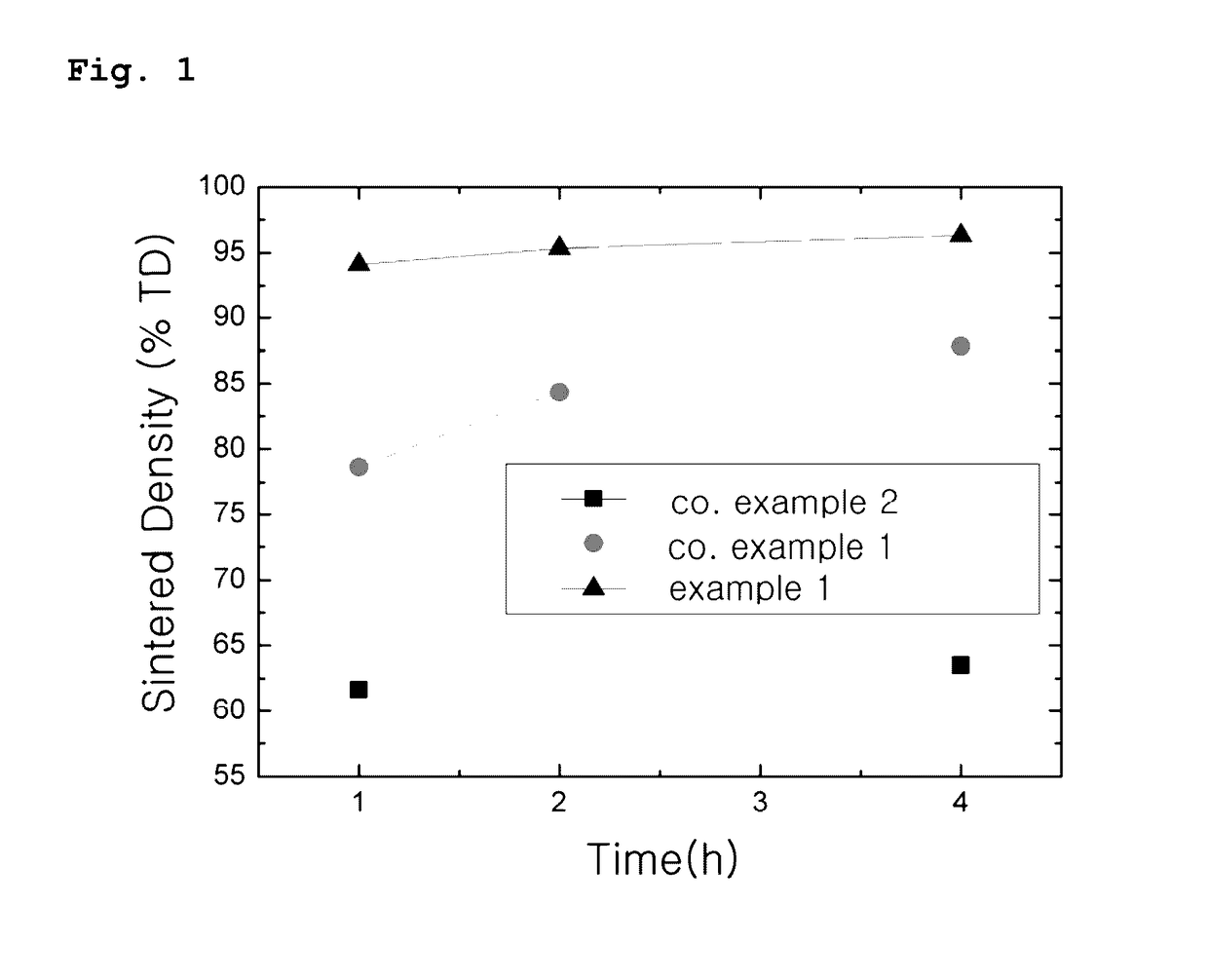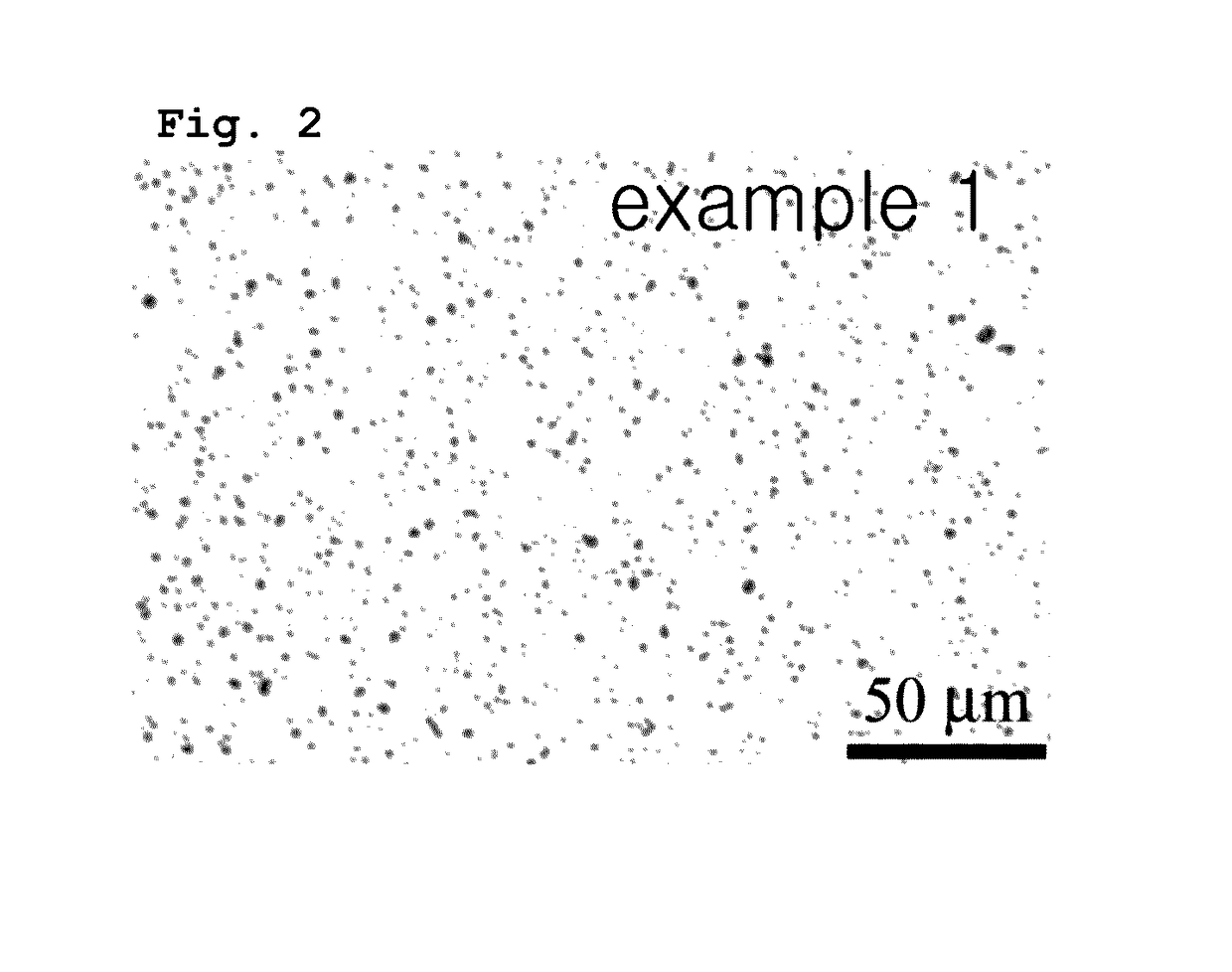Fabrication method of burnable absorber nuclear fuel pellets and burnable absorber nuclear fuel pellets fabricated by the same
a technology of nuclear fuel pellets and nuclear fuel pellets, which is applied in the direction of reactor fuel susbtance, nuclear elements, greenhouse gas reduction, etc., can solve the problems of increased internal pressure, easy volatilization, affecting the safety of the nuclear reactor core, etc., and achieves the effect of minimizing boron volatilization and reducing open porosity
- Summary
- Abstract
- Description
- Claims
- Application Information
AI Technical Summary
Benefits of technology
Problems solved by technology
Method used
Image
Examples
example 1
Fabrication of Burnable Absorber Nuclear Fuel Pellets 1
[0044]Step 1: Mixed powder was prepared by adding boron nitride and manganese oxide to uranium dioxide powder. Boron nitride was added to uranium dioxide powder in an amount of 0.1 wt. %, and manganese oxide was added to uranium dioxide powder in an amount of 0.2 wt. %, and mixed.
[0045]Step 2: The mixed powder prepared at Step 1 was subject to compacting under 3 ton / cm2 of pressure into compacts.
[0046]Step 3: The compacts prepared at Step 2 were sintered under hydrogen atmosphere at 1100° C. for 1 to 4 hr, to form burnable absorber nuclear fuel pellets.
experimental example 1
Analysis of Sintered Density of Burnable Absorber Nuclear Fuel Pellets
[0049]The sintered density of the burnable absorber nuclear fuel pellets fabricated at Example 1, and Comparative Examples 1 and 2 was analyzed with immersion method and the results are presented in FIG. 1.
[0050]Referring to FIG. 1, the nuclear fuel sintered pellets fabricated by adding boron compound only (Comparative Example 1) had far higher sintered density than that of the pure UO2 nuclear fuel sintered pellets fabricated under the same conditions of sintering temperature and sintering time (Comparative Example 2). This indicates that part of boron compound within the sintering temperature range of the present invention forms B2O3 liquid phase and subsequently accelerates the sintering of the nuclear fuel. However, the sintered density stayed around 88% TD and thus was lower than the targeting density (90% TD) even after 4 hours of sintering.
[0051]On the contrary, the burnable nuclear fuel sintered pellets fa...
experimental example 2
Analysis of Microstructure of Burnable Absorber Nuclear Fuel Pellets
[0053]The surfaces of the burnable absorber nuclear fuel pellets of Example 1 and the surfaces of the sintered pellets of Comparative Example 1 were examined under optical microscope and the results are presented in FIGS. 2 and 3.
[0054]Referring to FIGS. 2 and 3, the burnable absorber nuclear fuel pellets of Example 1 had a considerably fewer number of porosity (black dots) than the sintered pellets fabricated at Comparative Example 1. This is because the sintered pellets of Comparative Example 1 did not have proper densification due to sintering condition thereof, that is, low temperature sintering without being added with sintering additives. On the contrary, the sintered pellets of Example 1 had high sintered density, because densification was properly processed, generating less number of porosity even at low temperature due to the presence of manganese oxide added thereto.
[0055]From the above finding, it was con...
PUM
| Property | Measurement | Unit |
|---|---|---|
| temperature | aaaaa | aaaaa |
| temperature | aaaaa | aaaaa |
| temperature | aaaaa | aaaaa |
Abstract
Description
Claims
Application Information
 Login to View More
Login to View More - R&D
- Intellectual Property
- Life Sciences
- Materials
- Tech Scout
- Unparalleled Data Quality
- Higher Quality Content
- 60% Fewer Hallucinations
Browse by: Latest US Patents, China's latest patents, Technical Efficacy Thesaurus, Application Domain, Technology Topic, Popular Technical Reports.
© 2025 PatSnap. All rights reserved.Legal|Privacy policy|Modern Slavery Act Transparency Statement|Sitemap|About US| Contact US: help@patsnap.com



